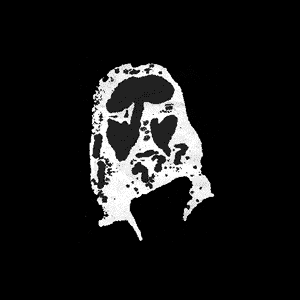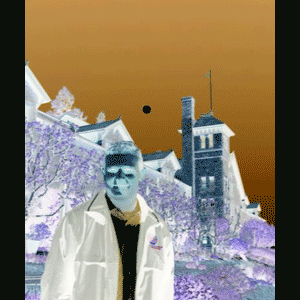Afterimages
Introduction
This activity demonstrates the phenomenon of negative afterimages. When you click on one of the small images at the lower left, a larger version of the image will appear in the square above it. Stare intently and steadily at the center of this adapting stimulus (there is often a small square in the center to help you maintain fixation). After about 12 seconds, the adapting stimulus will be replaced by a plain white square. Keep staring at the same spot and you should perceive the afterimage.
Once the white square appears, you can toggle back and forth between it and the adapting stimulus by clicking on the large square. Whenever the adapting stimulus is on the screen, it is very important to keep both your eyes and your head as still as possible. If you are having trouble seeing the afterimage clearly, try blinking quickly two or three times.
What’s Going On Here, Part I
Negative color afterimages result from the operation of opponent process cells in the visual system. As described in the textbook, the output from the three types of cones combine to form red–green, blue–yellow, and black–white opponent color pairs. Each of the mechanisms works basically the same way with respect to afterimages, so let us consider the stimulus with the word “GREEN” on a red background, second from the left, for illustration purposes.
Your visual system contains some cells that are excited by red light and inhibited by green light, and other cells that are inhibited by red and excited by green. We will call these R+G– and G+R– cells, respectively. Remember that white light includes all wavelengths (including red and green) in roughly equal proportions. Thus when you see the white square, the R+G– and G+R– cells normally fire at about the same rate.
What’s Going On Here, Part II
If you stare at the adapting stimulus for an extended period of time, the R+G–cells in the background and the G+R cells in the text will fire at a very high rate and will eventually become fatigued. At the same time, the G+R–cells responding to the background and the R+G–cells responding to the text will be inhibited. If you then look at the white square again (click on the image to toggle to the white square), the exhausted R+G– cells will fire at a slower rate than they did before you stared at the red circle, while the now liberated G+R– cells will fire slightly faster than they did previously (and vice-versa for the text). The result is an afterimage: The portions of your visual system that receive input from the opponent process mechanisms “see” the G+R– cells firing faster than the R+G– cells and conclude that you are seeing not a plain white square, but a green square with the word “GREEN” written in red in the middle.
Stare intently at the exact center of the large image until it is replaced by the white square (several of the images have a small fixation square to help you with this). Then keep staring at the white square and you should see the afterimage.
If you want to refresh the afterimage, click the large square to toggle back and forth between the image and the white screen. If you have trouble seeing the afterimage, try blinking a few times.
This image appeared on the front page of the Weekly World News on October 27, 1998.
The headline read: “LOOK AT THIS IMAGE FOR 1 MINUTE... and a MIRACLE will happen! Stare at the center of the image for one minute—and Jesus will appear before you HERE!”
This image is slightly different than the others because you will see a grayscale version of the image after 12 seconds rather than the white square. Stare at the fixation dot in the negative image and when the grayscale image appears, it should look as if it is in color.


















